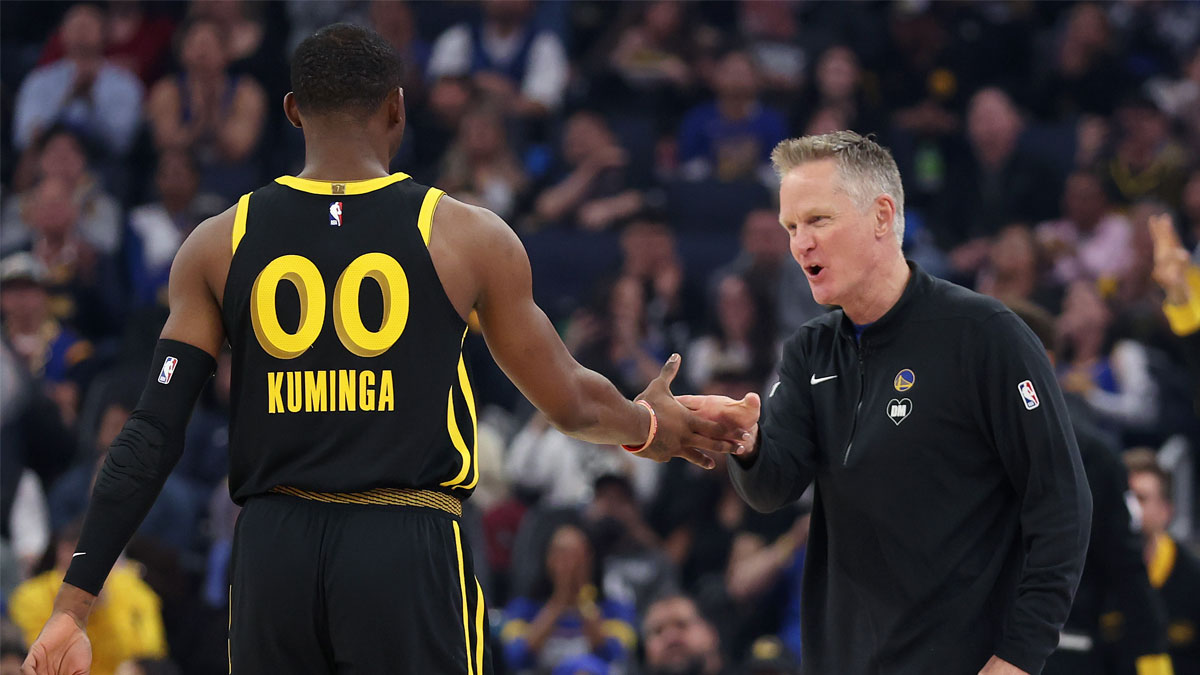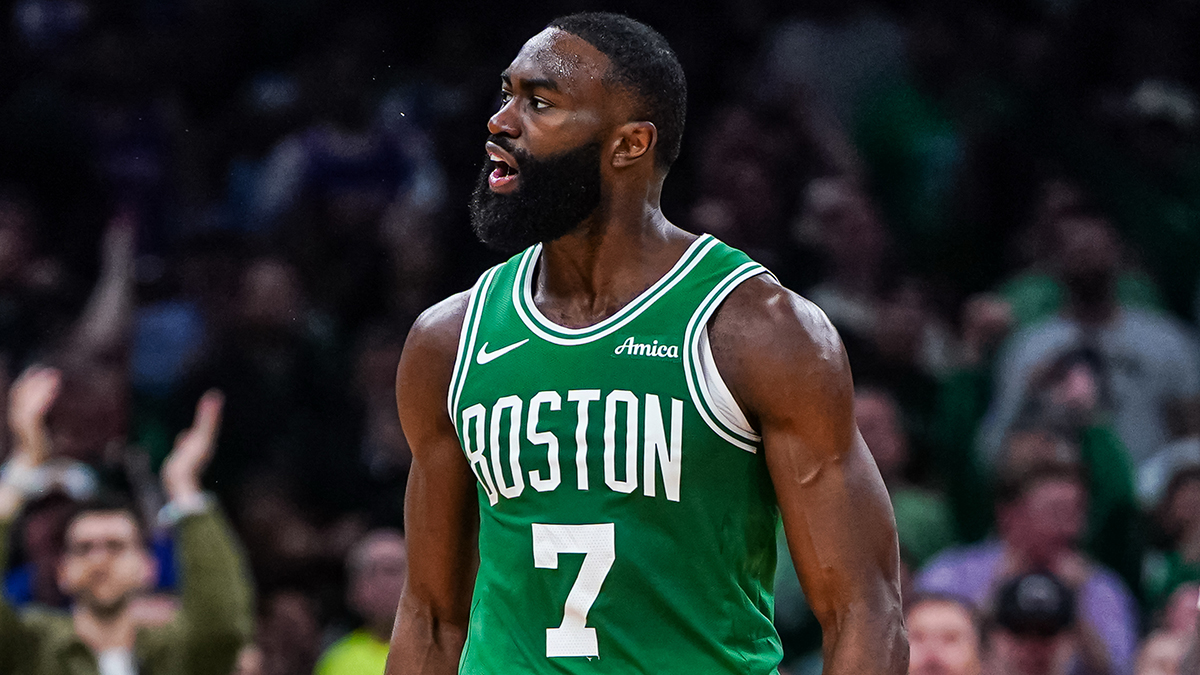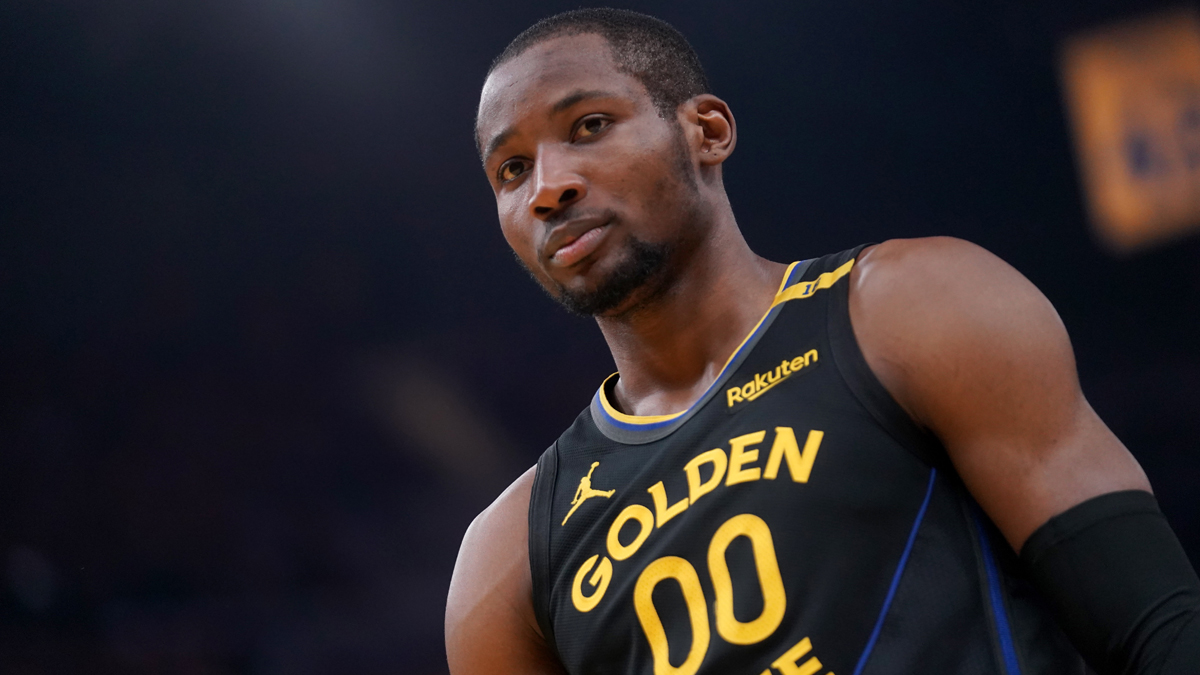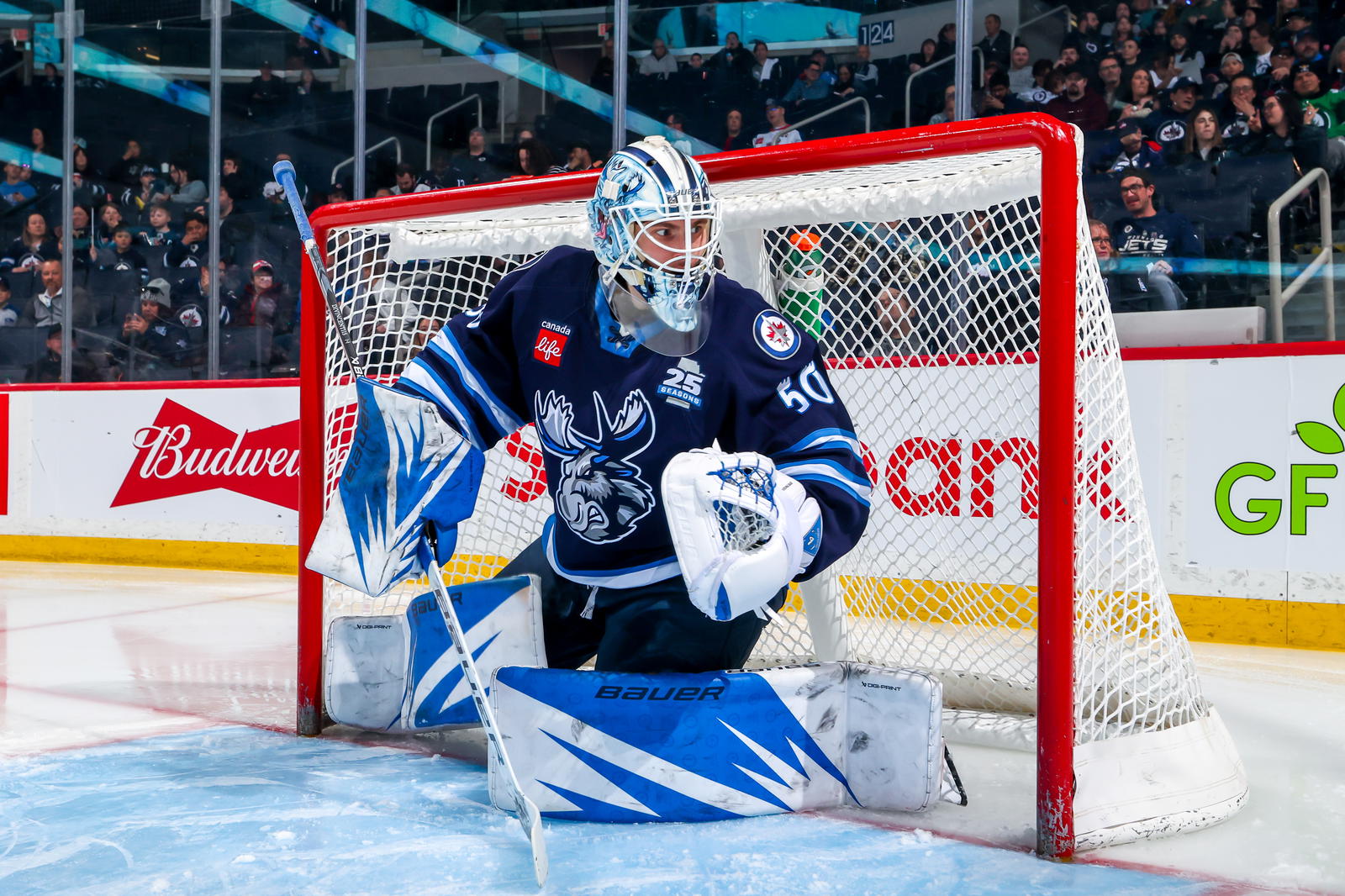Deadlines have a tendency to spark activity, and with the start of NBA training camps now just two weeks away — and with the October 1 deadline for restricted free agents to accept their teams’ qualifying offers just one week beyond that — we’re starting to get rumblings of some movement in the long-stagnant stalemate between the Golden State Warriors and forward Jonathan Kuminga.
Over a quiet summer, both team and player remained dug into their respective positions. Kuminga has sought either a lucrative long-term extension in Golden State that signals a pathway to a starting job and a starring role, or a sign-and-trade to an interested suitor willing to provide him with such an extension and path. According to multiple reports, both the Suns and Kings had designs on giving Kuminga a multi-year deal to slot into their starting lineups; Golden State general manager Mike Dunleavy Jr., however, reportedly wasn’t interested in the trade proposals that Phoenix and Sacramento had pitched the Warriors for Kuminga’s services.
Advertisement
The Warriors, in turn, have wanted to bring Kuminga back on a shorter, less lucrative pact: a reported two-year, $45 million standing offer with a team option on the second year that would require Kuminga to waive the de facto no-trade clause he’d receive as a player signing for one guaranteed season with a team that holds his Bird rights. That structure would allow Warriors brass to trade the 22-year-old forward at whatever time they deem most convenient and to the destination of their choosing — even if it’s not one that Kuminga would prefer to spend the next phase of his career.
A new week brings renewed hope, though. Jake Fischer reported last week that Kuminga was “strongly considering … accepting the $7.9 million qualifying offer” that would allow him to hit unrestricted free agency next summer — taking the same tack that fellow RFA Cam Thomas took in Brooklyn and introducing the threat of the Warriors losing him without receiving any players or draft compensation in return — and that “we could finally see some movement on the Kuminga front next week.” Sure enough: Anthony Slater and Shams Charania of ESPN reported Monday that Dunleavy and Co. have upped their offer to Kuminga — albeit in a context that still allows Golden State to retain as much control as possible over when and where to move the No. 7 pick in the 2021 NBA Draft:
Late last week, Dunleavy offered Kuminga a three-year, $75.2 million deal with a team option in the third season, sources told ESPN. That’s $48.3 million guaranteed in the first two seasons and basically the same per-year salary as fellow restricted free agent Josh Giddey, who re-signed with the Chicago Bulls for four years and $100 million. The difference: Half the length and a team-controlled third season and a subliminal understanding that the contract is more trade asset than commitment to a partnership.
Dunleavy and the Warriors are requesting the same structure as their previous proposal on the two-year, $45 million framework — a team option on the second season and a waiving of the inherent no-trade clause, sources said.
Kuminga, as you might expect, remains reluctant to assent to any resolution that grants Golden State that kind of control, given his well-publicized frustrations over what he sees as years of inconsistent opportunities and stunted growth under head coach Steve Kerr. Slater and Charania report that Kuminga and his agent, Aaron Turner, have responded to the Dubs’ latest pitch with one of their own, but that Dunleavy and owner Joe Lacob still haven’t taken their bats off their shoulders:
One of the latest counters, sources said, came in the past week: One year on a negotiable number, presented as a souped-up version of the qualifying offer, getting Kuminga a financial bump (up from $8 million) and unrestricted free agency next summer while wiping away the inherent no-trade clause and allowing the Warriors to use him as an expiring contract at the deadline. It would serve as a bridge deal that gives both sides the ability to examine another year together, but also a much more trade-friendly salary number as opposed to the qualifying offer, which has an Oct. 1 deadline. It is similar to a concept the Brooklyn Nets proposed to Cam Thomas.
Dunleavy declined the concept, sources said, and it is Lacob who is apparently against the balloon one-year offer, leaving the Warriors too vulnerable to losing Kuminga next summer for nothing.
Kuminga has proven capable of putting up numbers, averaging 15.8 points on 49.9% shooting and 4.7 rebounds in 25.6 minutes per game over the last two seasons. That production has increased when he’s gotten the opportunity to start: 17.1 points on 51.4% shooting to go with 5.1 rebounds, 2.7 assists and 1.4 combined steals-and-blocks in 28.8 minutes per game over 56 starts.
Only a handful of players Kuminga’s age have produced like that over the past couple of seasons: Alperen Şengün, Jalen Williams, Evan Mobley, Chet Holmgren and Jalen Johnson. All five of those guys have already secured monster bags; all five, though, have also shown themselves to be high-level defensive players, high-level playmakers, or both. Kuminga, on the other hand, owns a 1.3-to-1 career assist-to-turnover ratio and hasn’t developed into the kind of on-ball stopper that you’d hope for from a 6-foot-8, 210-pound über-athlete with a 6-foot-11 wingspan.
Advertisement
That’s a problem in Golden State, where the ecosystem that Kerr has built around Stephen Curry requires everybody else to move the ball and their bodies, knock down 3s off the catch, defend like demons, and generally fit into a defined role. The need to get in where you fit in became even more acute once the Warriors traded for Jimmy Butler: a high-efficiency, low-turnover defensive ace who plays Kuminga’s position. Warriors lineups featuring all three of Butler, Kuminga and Draymond Green got outscored by 36 points in 105 minutes last season, according to PBP Stats, scoring at a rate that would’ve ranked dead last in the NBA; lineups featuring Butler and Green without Kuminga, however, were +180 in 940 minutes, and scored at a top-five-caliber clip.
Time and again down the stretch last season, Kerr limited or eliminated Kuminga’s minutes, leaning into what worked best for Golden State in pursuit of playoff positioning and postseason success. Kerr only dusted Kuminga off when forced to after Curry injured his hamstring in Game 1 of the Warriors’ second-round series against the Rockets. Over the next four games, Kuminga averaged 31 minutes a night, averaging 24.3 points per game on 55/39/72 shooting splits; he also had five assists against eight turnovers over those four games; the Warriors lost his minutes by 28 points, lost all four games, and lost the series.
It’s the dilemma in a nutshell. The Warriors’ only chance of playing meaningful basketball come springtime lies in doing everything possible to optimize the roster around Curry. Kerr clearly feels that, for all Kuminga’s athleticism and gifts as a scorer, his specific shortcomings as a connective playmaker and defender make him an awkward fit next to Steph. That athleticism and those gifts are clear, though, and clearly have value; with Curry, Butler and Green all on the wrong side of 35, Dunleavy and Co. know that Kuminga, and whatever contract he winds up signing, likely represents the Warriors’ best trade chip to play in search of new sources of talent.
Advertisement
Kuminga and his reps know that, too, and want the deal to reflect that, in both length and dollars. But committing to a deal that pays Kuminga more money up front (potentially foiling the Warriors’ plans of filling out the roster with reportedly waiting vets like Al Horford, De’Anthony Melton, Gary Payton II and Seth Curry) and that stretches beyond the summer of 2027 (when Curry, Butler and Green are all slated to be off the books, giving the Warriors all the financial flexibility in the world if they want it) would complicate matters significantly for Golden State, now and in the future.
The staring contest, then, continues, for both the Warriors — who have effectively sat out the NBA’s offseason, standing as the only team in the league to make no signings, still featuring six open roster spots on the verge of camp, and seeing options like once-rumored target Malcolm Brogdon come off the board — and Kuminga, who enters his fifth pro season still looking to definitively carve out his niche. With camp a mere fortnight away and the Oct. 1 qualifying offer deadline just three weeks out, it’ll be awfully interesting to see who blinks first.







